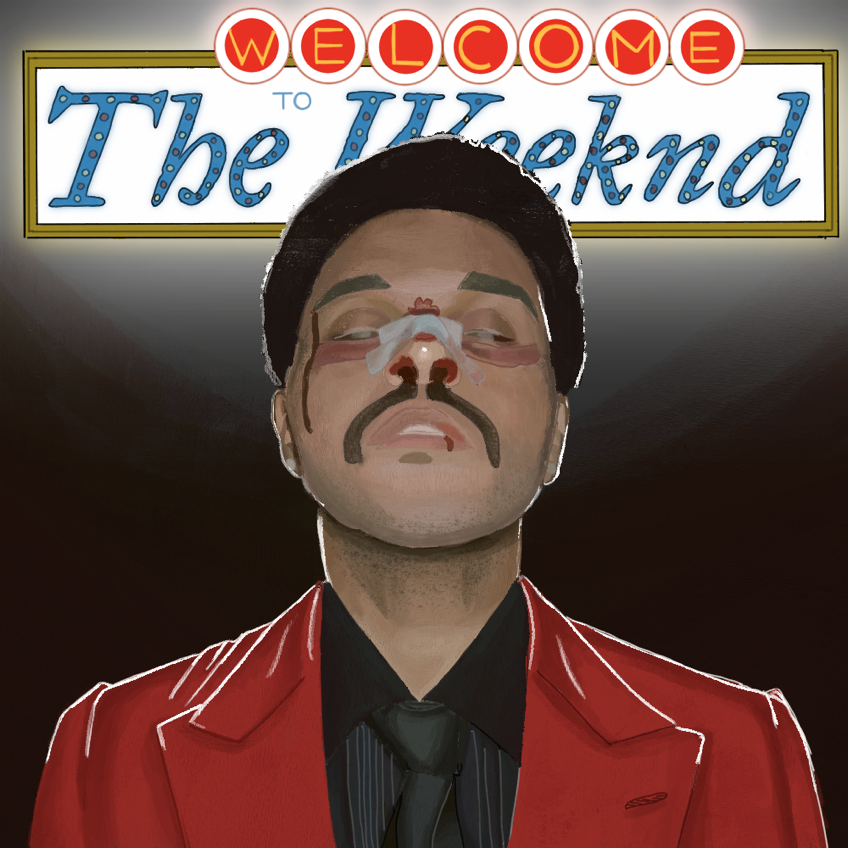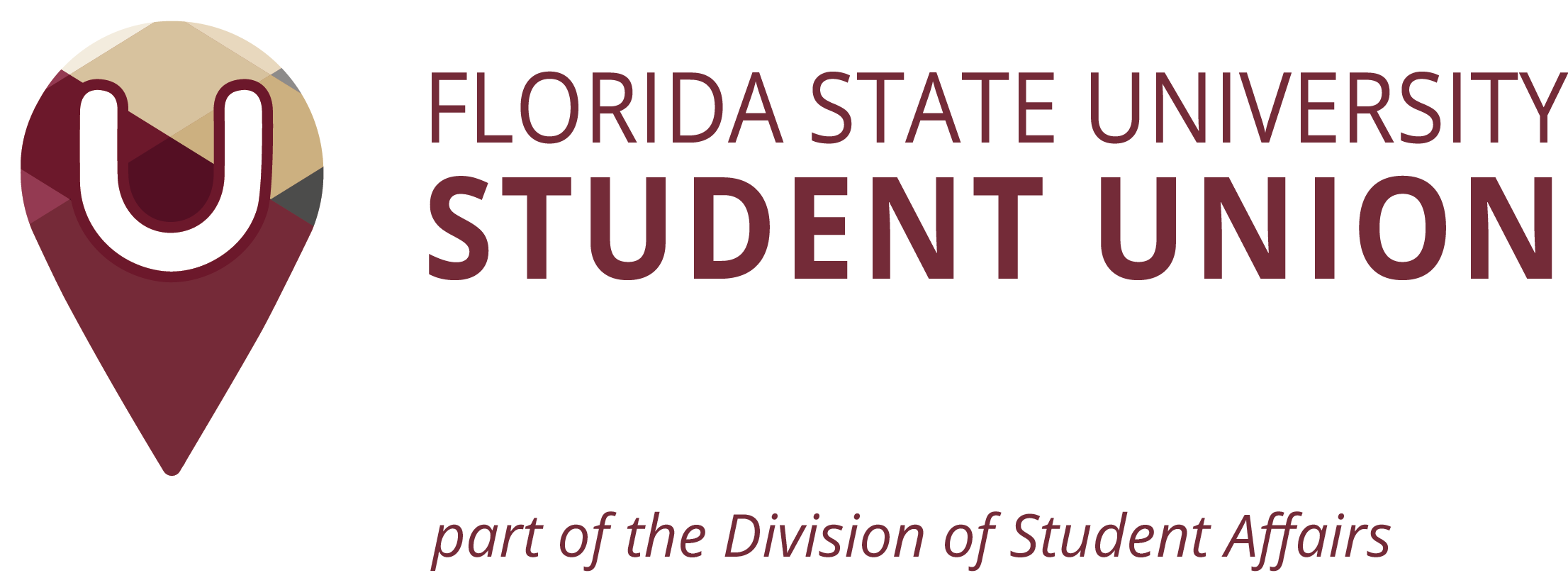Please visit response.fsu.edu for official FSU updates and resources.
From Toronto Streets to Superbowl Stardom: The Weeknd’s ‘After Hours’ Album Explained
 As an avid Weeknd fan, my friends and family have come to me quite often over the past year with questions about the After Hours era persona that The Weeknd has adopted in his album cover, music videos, live performances, as well as his social media. These kinds of questions have only increased since his eye-catching performance in the Super Bowl LV Halftime Show. As part of this persona, he has appeared sporting a stunning red suit with sunglasses at certain times and bloody bandages and scars at others, even appearing to have gone through extreme plastic surgery in his most recent music video for “Save Your Tears.” Hopefully, I can make his aesthetic a bit clearer for those of you who don’t have a Weeknd mega-fan like myself to ask, or if you just want to know more about his music after watching him perform at Super Bowl LV.
As an avid Weeknd fan, my friends and family have come to me quite often over the past year with questions about the After Hours era persona that The Weeknd has adopted in his album cover, music videos, live performances, as well as his social media. These kinds of questions have only increased since his eye-catching performance in the Super Bowl LV Halftime Show. As part of this persona, he has appeared sporting a stunning red suit with sunglasses at certain times and bloody bandages and scars at others, even appearing to have gone through extreme plastic surgery in his most recent music video for “Save Your Tears.” Hopefully, I can make his aesthetic a bit clearer for those of you who don’t have a Weeknd mega-fan like myself to ask, or if you just want to know more about his music after watching him perform at Super Bowl LV.
The Weeknd, whose real name is Abel Tesfaye, has had a remarkable rise to fame since his first mixtape House of Balloons, which came out in March of 2011. Fast-forward nearly ten years, and Abel has become one of the biggest names in music with numerous hit songs including “The Hills,” “Earned it,” “Starboy,” “Can’t Feel My Face,” and last year's number one song, “Blinding Lights.” The Weeknd began promoting his fourth studio album, titled After Hours, in November 2019, when he unveiled a red-jacketed, villainous alter ego. The character’s appearance became more striking and mutilated as the era went on, displaying a bloodied face on the album’s cover in March 2020.
After the album was released, fans immediately began dissecting the tracklist to try and see how this persona fits into the story of the album. While Abel rarely explicitly explains the meanings behind his music, in an interview with Variety, he said “this character is having a really bad night, and you can come with your own interpretation of what it is.” The album tells stories of Abel’s celebrity life as he struggles with fame, sex, drugs, heartbreak, and the toxic nature of Hollywood. The album also depicts his struggle between the “real” Abel and the red-jacketed alter ego that symbolizes the vices and over-indulgence of his unhealthy Hollywood lifestyle. After Hours boasts a wide variety of musical styles, ranging from 80s influenced synth-pop tunes such as “Blinding Lights,” to Modern-trap bangers like “Heartless.” Yet even with a diverse set of styles, After Hours is still an extremely cohesive narrative project with a very cinematic feel.
The album itself can be split into three sections or “chapters.” At the start of the album, we are introduced to Abel’s thoughts as he struggles through a recent breakup (likely with his ex-girlfriend, supermodel Bella Hadid). He is not ready to be “Alone again” but acknowledges that he too shares fault for the breakup. On “Too Late” and “Hardest To Love,” he uses soft vocals and smooth R&B production to narrate his struggles with the conflicting emotions of wanting to be with her but knowing their relationship isn’t healthy. On “Scared to Live,” which is an interpolation of Elton John’s “Your Song,” Abel implores his ex to move on with grandiose vocals and piano notes. Next, with “Snowchild,” Abel switches styles and delivers a lyrically-dense rap over low-key trap production as he reminisces on his life before fame. He is grateful for no longer being broke and homeless on the streets of Toronto, but unsatisfied with his luxury life in Los Angeles, as it's not what he envisioned.
The second portion of the album starts with “Escape from LA,” which is divided into two parts. In the first half, Abel sings about his desire to leave LA, with a growing feeling that if he continues living like this, things won’t end well for him. He also ponders his past relationships and his feelings of loneliness. This is where we are introduced to Abel's alter ego, the version of The Weeknd that loves the fast-paced nature of LA and constantly gives in to his unhealthy desires. The second half of the song includes a total musical shift to a stripped R&B beat as Abel recalls a sexual encounter he had with a girl in a recording studio and comments on how most of the women from LA are the same, superficial in both appearance and nature. The significance of the head bandages also reflects on the absurd culture of Hollywood celebrity and how people manipulate themselves for superficial reasons and validation. Abel’s alter ego has now taken over, and he goes on a wild adventure in Las Vegas, where he indulges in all of his vices and reverts to his old ways. We see this in “Heartless,” “Faith,” and “Blinding Lights,” all of which juxtapose upbeat instrumentals with dark lyrics, such as “I'm back to my ways 'cause I'm heartless, All this money and this pain got me heartless.” While sonically these songs differ greatly, they all paint the picture of Abel’s dramatic relapse as he gives in to his alter ego’s desires. Unfortunately for Abel (as he foreshadowed earlier in the album), things take a turn for the worse. At the end of the song “Faith,” we hear the instrumental slowly fade out and the sound of an ambulance. The “blinding lights” of the ambulance are symbolic of both his physical and metaphorical relapses into his luxurious Hollywood lifestyle.
The final portion of the album starts with the funky dance-hall track, “In Your Eyes”, where Abel recovers from his relapse and reaches out to his ex-lover in an attempt to get back together. He promises to be a better man, even though he knows this isn’t true. Alas, this doesn’t last for very long as the woman Abel is singing to contemplates the offer but changes her mind and decides to leave him for good. On “Save your tears,” Abel sings over indie-pop instrumentals and expresses his heartbreak without blaming the woman because he knows he is incapable of changing into someone she can be happy with. The narrative reaches its climax with the second to last song, titled “After Hours,” the same as the album. Where we hear a heartbeat-like drum and abrasive trap production that starts softly and steadily increases in intensity as the alter ego returns to the forefront. Once he realizes that the relationship is truly over, Abel accepts that this is who he “really” is, allowing the alter ego to take over and embracing his role as a “villain.” We can also see this in his music videos, where his facial expressions constantly change between ecstasy and agonizing pain. The final track, “Until I Bleed Out,” wraps the album up as a final cry for help. He knows that this life will ultimately lead to his demise and this scares him, but the other part of him has accepted that fate and just wants to move on.
While the ending may not be particularly joyful, it is a brilliant conclusion to the story of Abel’s ups and downs with his love life, celebrity life, and identity. While I may be biased, I highly encourage you to listen to After Hours and appreciate the stunning musical narrative The Weeknd creates. With its wide range of musical styles, narrative themes, glossy production, outstanding vocals, and profound lyrics, The Weeknd is truly giving fans a compelling musical experience. As a long-time fan, I have loved seeing his progression both as a musician and person and I can’t wait to see what the next phase in his career brings.
Written by: Bryan Herrera | Instagram
Art by: Mikael Byrd | Instagram



